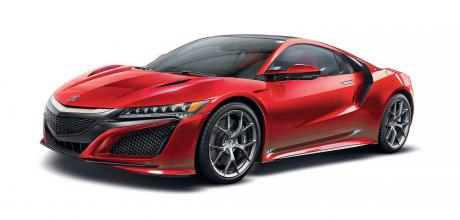2017 Honda NSX - Second-gen supercar’s failure to launch

There’s a thread that runs through an entire bloodline of supercars that we can tease at during their lifetimes but which only really makes itself apparent through the lens of hindsight. Underrated, misunderstood, underbacked or merely out of place and time when they were launched, cars like the BMW M1 E26, the Porsche 911 Carrera RS 964, the Ferrari F50, the McLaren 12C and the BMW i8 all needed time beyond their respective production runs for us to appreciate them for what they achieved.
The Honda NSX could well join their ranks. It certainly counts as overlooked, here in Australia especially. “We want to deliver one less than demand,” said engineering project leader Jason Bilotta in 2016, perhaps unintentionally parroting Enzo Ferrari.
The build capacity was just eight cars per day, with the first cars making landfall in Australia in late 2017. Two cars found owners in that year. Another two vehicles were registered in 2018. Sales improved by 50 percent in 2019, with three cars arriving. 2020 sales were nearly as strong, shifting only three units less, for a grand total of zero. While the sales of rivals supercars tanked in COVID-blighted 2021, the NSX’s figures held absolutely steady, still recording zero sales, a level of continuity that carried over to 2022. So, seven units in almost five years on sale. Owners’ club meets must be pretty intimate affairs.
Forgive the snark because supply over here semiofficially dried up in late 2020. The NSX has continued to be sold in its key markets since then, with a run-out 449kW/667Nm Type S edition for 2022.
Even in standard guise, the NSX was and is a serious piece of kit. A Cosworth-developed dry-sumped V6 with both direct and port injection, electric torque vectoring, a nine-speed dual-clutch transmission by Ricardo, all contributed to Honda being confident that on any objective metric that mattered, the NSX would beat the development benchmark, the Ferrari 458. In the interim, Maranello rediscovered the joys of forced induction and the NSX arrived to face the Ferrari 488 GTB, a considerably quicker car.
Developed to be able to drive in an Ohio winter, the NSX was sold with some underwhelming Continental tyres and a bias towards safe understeer in anything other than track mode, Honda hobbling the car’s genius for an outlier use-case. Had some relatively superficial development decisions undone much of Honda’s incredible engineering efforts? There’s an MBA case study in there somewhere.
HIGH-BORN HYBRID
The NSX Type-S features uprated tyres and electric motors, faster gearshifts, improved aero and cooling and an optional Lightweight Package with carbon-ceramic brakes and carbonfibre body and interior parts. Honda claims it’s two seconds quicker around Suzuka than a standard NSX and will accelerate to 97km/h in 2.9 seconds. Only 350 will be built for the US, Canadian and Japanese markets.
YEARLY AU SALES
- 2017 – 2
- 2018 – 2
- 2019 – 3
- 2020 – 0
- 2021 – 0
- 2022 – 0

